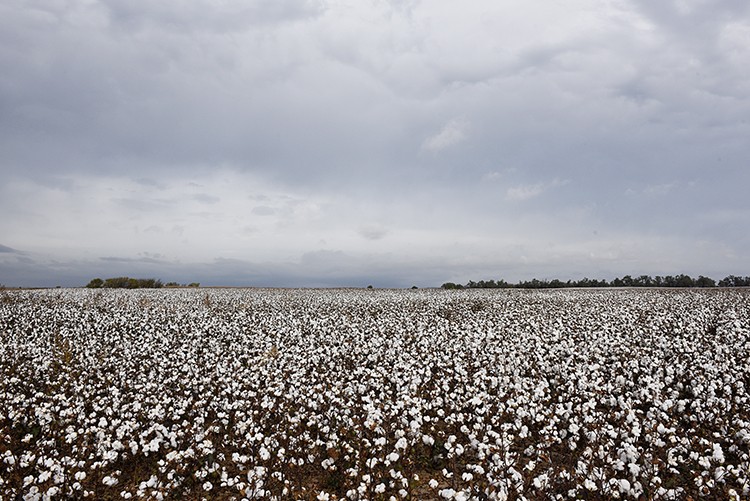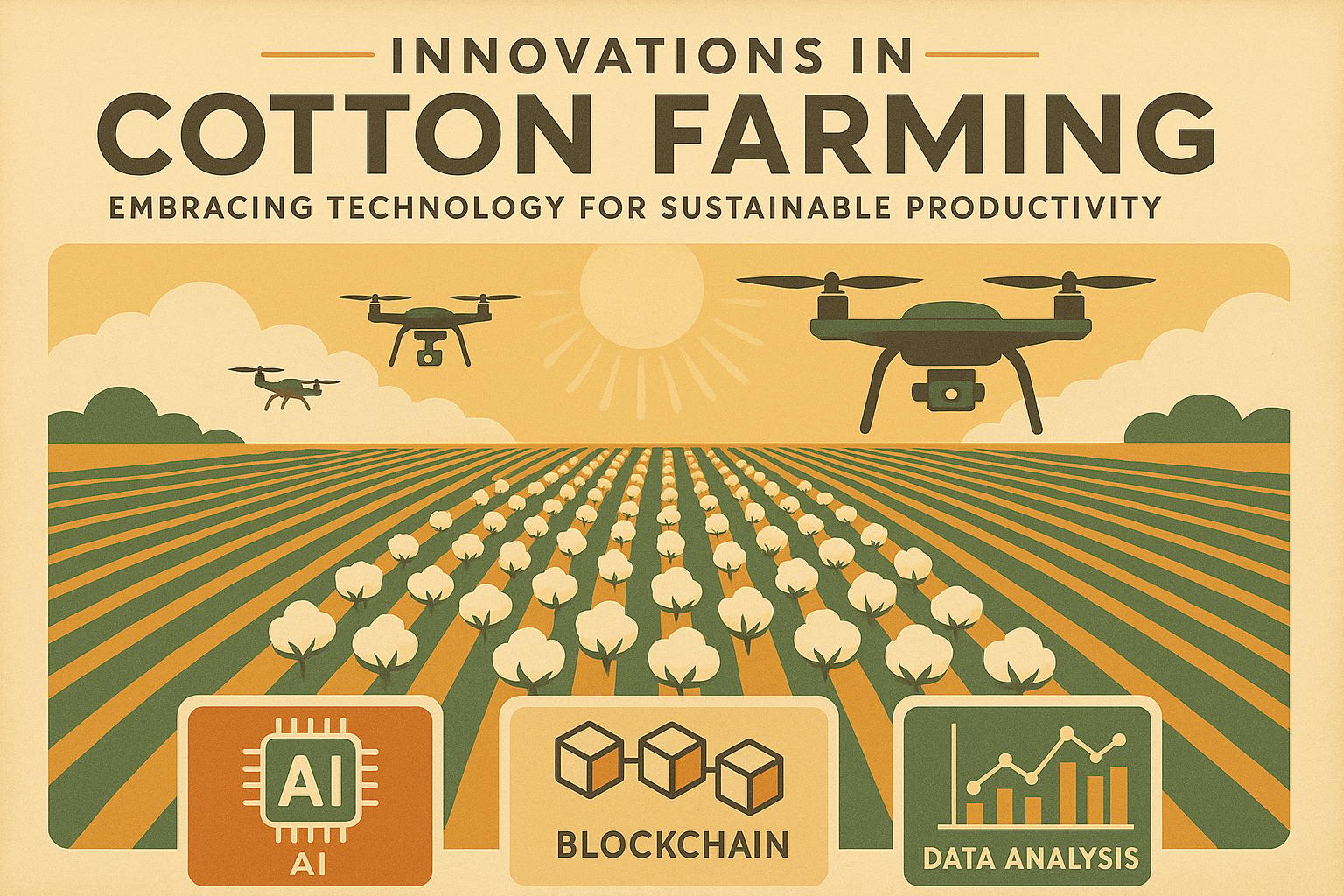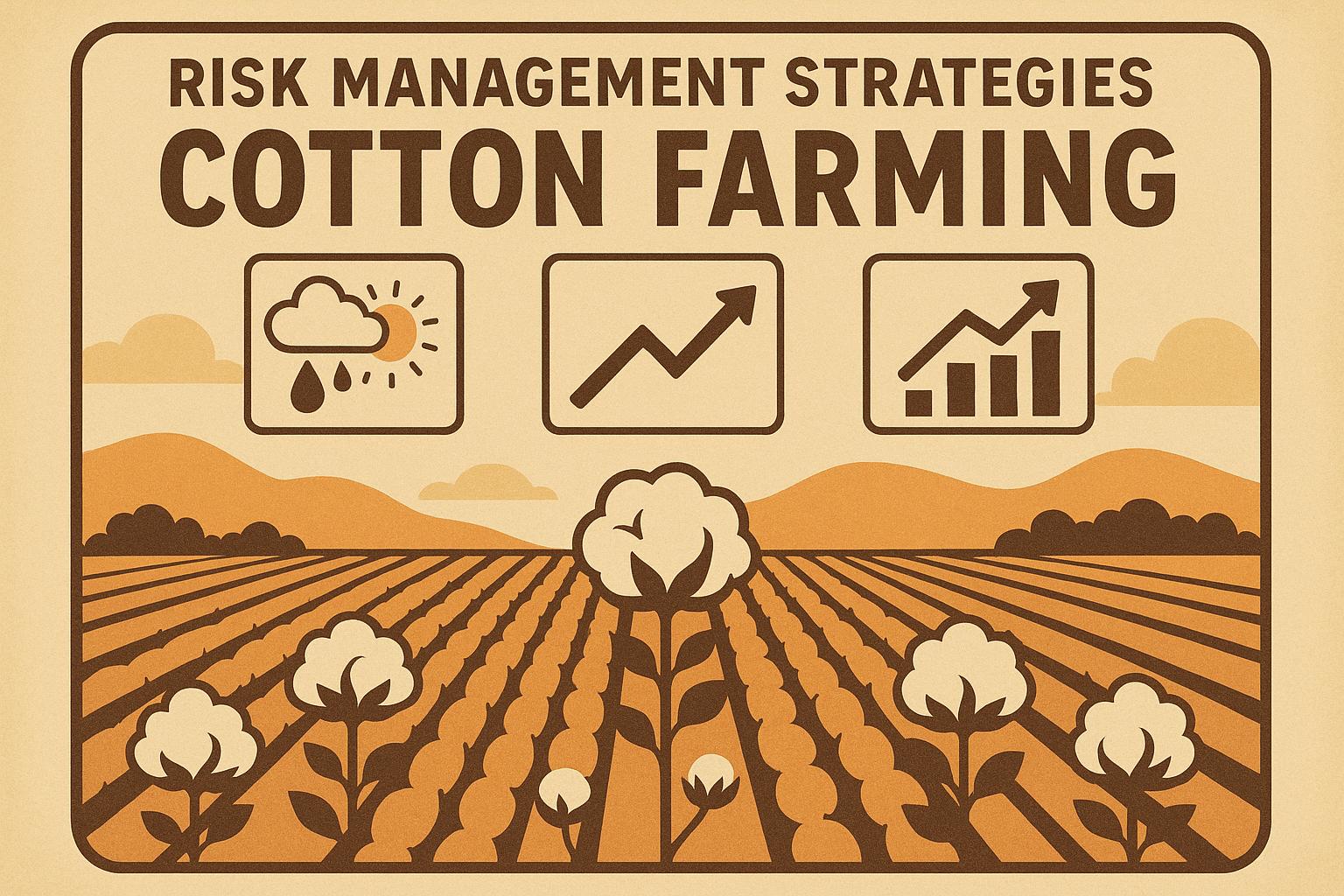Cotton has played a modest yet increasingly vital role in Kansas's agricultural landscape since the 19th century. From early experiments in southern counties to a modern resurgence driven by climate change, drought-tolerant varieties, and policy shifts, cotton's story in Kansas is one of adaptation and growth. Though never a dominant crop like wheat or corn, it has expanded significantly in recent decades, contributing to economic diversification and sustainable farming practices. Here's a quick overview of its evolution:
- Early Introduction (Late 1800s): Cotton production began in southern Kansas counties, with historical evidence of small-scale farming amid the state's focus on grains and livestock.
- Mid-20th Century Lull: Production remained limited, with sporadic revivals in the 1980s, including a few bales ginned in Sterling.
- 1990s Revival: The 1995 Farm Bill and new heat-tolerant varieties sparked growth, leading to the first modern gin in Winfield in 1996 and 4,450 bales produced that year.
- 21st Century Expansion: Acres jumped twelvefold between 2015 and 2020, driven by climate shifts and water efficiency; by 2024, Kansas produced 200,000 bales, ranking 14th nationally.
- Modern Challenges and Innovations: Issues like herbicide drift and boll weevils persist, but precision agriculture and drought resistance position cotton for future growth.
This guide explores the rich history, key innovations, and future path of cotton in Kansas, highlighting its blend of heritage and forward-thinking agriculture.
The Beginnings of Cotton Farming in Kansas
How Cotton Farming Started in Kansas
Cotton was introduced to Kansas in the 19th century, shortly after early white settlers arrived in 1854 and began experimenting with various crops on lands previously farmed by Native Americans. While grains like wheat and corn thrived, settlers tried cotton alongside tobacco and oats in southern counties. Historical evidence shows production across these areas in the late 1800s and early 1900s, though it remained small-scale due to the state's cooler climate and focus on other staples. During the Civil War, a Polish immigrant brought Eli Whitney's cotton gin to Kansas, aiding early processing efforts. By the early 1900s, cotton persisted on a limited basis but never became mainstream.
Eli Whitney's Cotton Gin and Its Impact
Invented in the late 1790s, Eli Whitney's cotton gin revolutionized processing by mechanically separating seeds from fibers, boosting efficiency from hand methods to up to 50 pounds per day. In Kansas, the gin's arrival during the Civil War marked a key technological milestone, enabling small producers to handle harvests more effectively. However, limited infrastructure meant much of the early cotton was ginned out of state, such as in Oklahoma during the late 1980s and early 1990s. This innovation laid the groundwork for later expansions, though Kansas's climate initially constrained widespread adoption.

Historical cotton harvesting in Kansas, showcasing early cooperative efforts in the region.
The Growth of Kansas's Cotton Industry
Cotton Expansion in Southern Kansas
Cotton's growth accelerated in the 1990s with genetically engineered varieties better suited to Kansas's shorter growing season and heat requirements. The 1995 Farm Bill's "Freedom to Farm" provisions allowed cotton on previously restricted program acres, spurring planting in counties like Cowley, Sumner, Seward, and Stevens. By 1996, the first modern gin was built in Winfield, processing 4,450 bales. Additional gins followed in Anthony, Moscow, and Cullison, with total ginnings exceeding 1 million bales by the early 2000s. Southwest Kansas emerged as a hub, leading production in 2002 with 34,300 bales and 55% of planted acres.
Climate change has further fueled expansion, with hotter temperatures and dwindling water resources making cotton a viable alternative to thirstier crops like corn. Acres increased twelvefold from 2015 to 2020, supported by infrastructure like warehouses in Clearwater and Liberal.
Cotton’s Economic and Political Role
Cotton has diversified Kansas agriculture, providing economic resilience amid droughts, such as the 2011 event that prompted the state's 50-year water vision emphasizing cotton's efficiency—using 50% less water than corn while yielding four times the economic impact per inch. Over 220 active growers have produced 2.4 million bales since 1996, generating revenue through lint sales and byproducts like cottonseed for dairy feed. Politically, the 2022 Kansas Cotton Boll Weevil Act established a program to combat pests, with assessments up to $2 per bale. Organizations like the Kansas Cotton Association (formed in 2003) advocate for the industry nationally.
Challenges and Changes in Cotton Farming
Kansas cotton has faced hurdles from its niche status. Early production was limited by climate and lack of infrastructure, with ginning often outsourced. Modern challenges include high equipment costs (e.g., $600,000 for a picker), reliance on custom harvesters, and yield losses from 2,4-D herbicide drift. Potential boll weevil outbreaks from southern regions prompted protective legislation. International trade issues and export market access also pose risks. However, innovations like 2,4-D-tolerant varieties and efficient balers are addressing these, enabling resilience.
Cotton Production Technology
Roller and Saw Cotton Gins
Modern gins in Kansas build on Whitney's design, processing over 225 bales per hour (each 480 pounds) during 24/7 operations. After ginning, USDA tests samples for quality metrics like fiber length and cleanliness, with higher grades fetching better prices.
Byproducts of Cotton Ginning
Ginning yields valuable byproducts, all sold without waste:
| Byproduct | Primary Uses | Industry Applications |
|---|---|---|
| Cottonseed | Livestock Feed | High-protein dairy supplement boosting butterfat |
| Burs | Mulch/Compost | Soil enhancement and livestock filler |
| Other Materials | Industrial | Paper, currency, oils for cosmetics and cooking |
These add economic value, supporting diversification.
Cotton Gins Directory
For facilities, visit cottongins.org or local associations like the Kansas Cotton Association.
Cotton Farming in Kansas Today

A vast modern cotton field in Kansas under a cloudy sky, illustrating the crop’s expansion in the state.
Modern Farming Methods
Today's practices include precision agriculture with GPS and drones for pest detection, alongside crop rotations for soil health. Cotton's drought tolerance (needing 16 inches of water, often with 7 inches irrigated) suits Kansas's water-scarce regions. Farmers like Andy Moser highlight its role in risk-taking for sustainability.
Kansas's Place in the U.S. Cotton Market
Ranking 14th nationally, Kansas produced 200,000 bales in 2024 from 131,000 planted acres, yielding 778 pounds per acre. It contributes 1.4% of the U.S. total, with potential growth amid national declines projected for 2025.
| Economic Indicator | Contribution |
|---|---|
| Cultivated Acreage (2024) | 131,000 planted, 124,000 harvested |
| 2024 Yield & Production | 778 pounds per acre; 200,000 bales |
| Job Support | Diversifies operations for over 220 growers |
| Key Region | Southern and southwest Kansas |
Conclusion: Kansas's Cotton History and Future
Summary of Key Points
Kansas cotton's journey reflects resilience, from 19th-century introductions to a 1990s revival and recent climate-driven boom. Key milestones include the 1995 Farm Bill, modern gins, and water-efficient adaptations.
| Era | Development |
|---|---|
| Late 1800s | Early production in the southern counties |
| 1980s-1990s | Limited revival and first modern gin (1996) |
| 2000s-2010s | Over 2.4 million bales produced; water vision integration |
| 2020s | Twelvefold acreage increase; 200,000 bales in 2024 |
The Future of Cotton in Kansas
With advancements like tolerant varieties and efficient tech, cotton promises sustainability amid climate change. As farmer Andy Moser notes, "young guys, sometimes, we've got to take some risks." Projections for 2025 suggest continued viability, positioning Kansas as an emerging player in U.S. cotton.
FAQs
Where is the most cotton grown in Kansas?
Primarily in southern and southwest counties like Seward, Stevens, Cowley, and Sumner, where heat and rainfall suit the crop. In 2002, the southwest district accounted for 45% of production with 34,300 bales. Benefits include:
- Drought tolerance for water conservation.
- Crop rotation for weed management and soil health.
- Byproducts are enhancing the livestock and industrial sectors.


